17 Companion Plants for Thyme (with Pictures)
-
Greg Iacono
- Last updated:
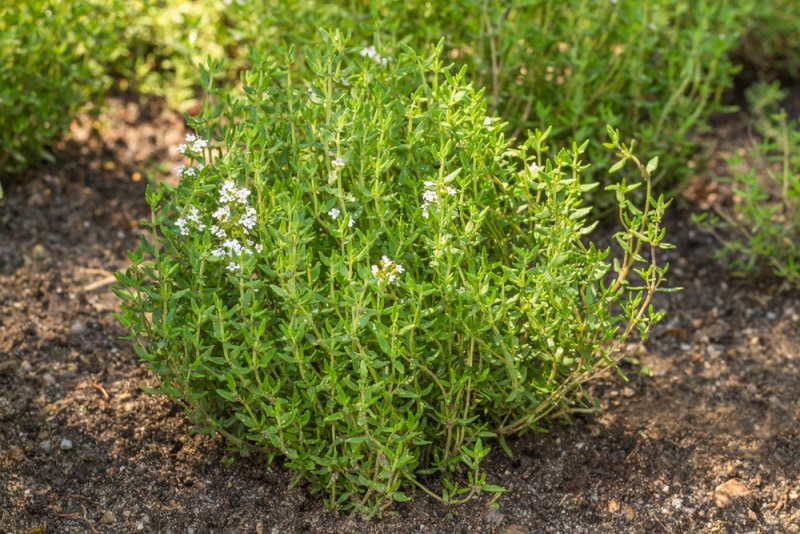
Having a companion to spend time with makes life easier and more enjoyable. That goes for your plants, too, and many plants will grow better if they’re placed near a “companion” plant. For example, one plant might suffer from a certain insect, but another will have properties the same insect hates.
Planting them together will be a boon for both! Thyme is a great companion plant; it’s a hardy perennial herb popular in French, Mediterranean, and Italian food. The reason is that thyme boosts the defenses of other plants, increases their growth, is drought-tolerant, and needs very little attention.
Wondering which plants would make excellent companion plants with thyme? If yes, we have the answer for you! Read on to discover the 17 companion plants for thyme, how to plant them, and many other helpful companion gardening tips below!
The Top 17 Companion Plants for Thyme
1. Blueberries

| Scientific Name | Vaccinium sect. Cyanococcus |
| Type | Fruit |
| Location | Nearby |
Not only are blueberries a superfood and one of the most delicious fruits, but they also make an excellent companion plant with thyme. One reason is that thyme attracts honeybees, and the bees will pollinate your blueberries.
Thyme is also a deterrent to several types of pests that can affect blueberries, so planting it nearby will keep your blueberry plants healthier and provide a bigger crop. Some gardening experts say that thyme will also improve your blueberry’s flavor.
2. Broccoli

| Scientific Name | Brassica oleracea var. italica |
| Type | Vegetable |
| Location | Together |
As a cabbage crop, broccoli is also a superfood and is extremely popular. Planting thyme with your broccoli helps this nutritious veggie substantially because of thyme’s ability to repel nasty pests like aphids and cabbage moths. More than that, however, thyme attracts ladybugs, and ladybugs consume aphids. It’s been estimated that a single ladybug can eat upwards of 50 aphids a day!
3. Brussels Sprouts

| Scientific Name | Brassica oleracea var. gemmifera |
| Type | Brassica oleracea var. gemmifera |
| Location | Together |
Brussels sprouts, those infamous tiny cabbages from the land of Belgium, are considered a delicacy by adults but not by children. If you have Brussels sprouts in your garden, planting thyme alongside them is a great idea because it will keep several pests away.
Thyme, as we mentioned earlier, also attracts ladybugs, and, like honeybees, ladybugs are pollinators that will help your Brussels sprout plants thrive. Plus, when you’re cooking them, adding fresh thyme to your b-sprouts tastes superb!
4. Cabbage
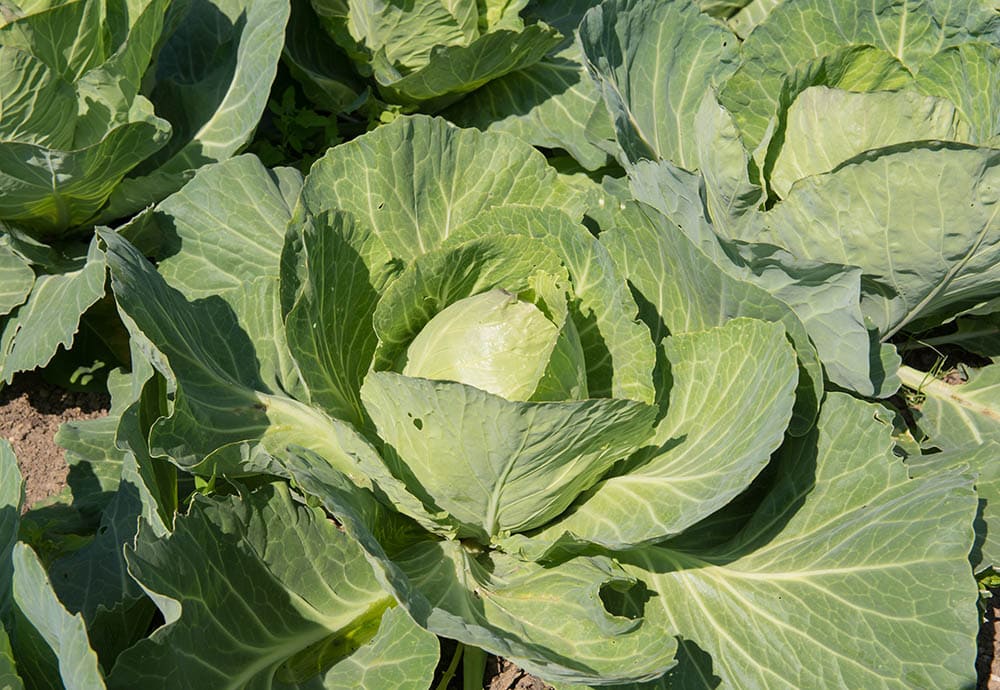
| Scientific Name | Brassica oleracea var. capitata |
| Type | Vegetable |
| Location | Together |
Cabbage does very well when planted together with thyme. Many of the pests that plague cabbage hate thyme and its intense aroma. Also, while cabbage takes up a lot of soil space, thyme does not, so planting them together isn’t a problem. Lastly, thyme keeps away one of the cabbage’s biggest pests, cabbage worms. With thyme nearby, you’ll have cabbage aplenty this harvest season.
5. Cauliflower
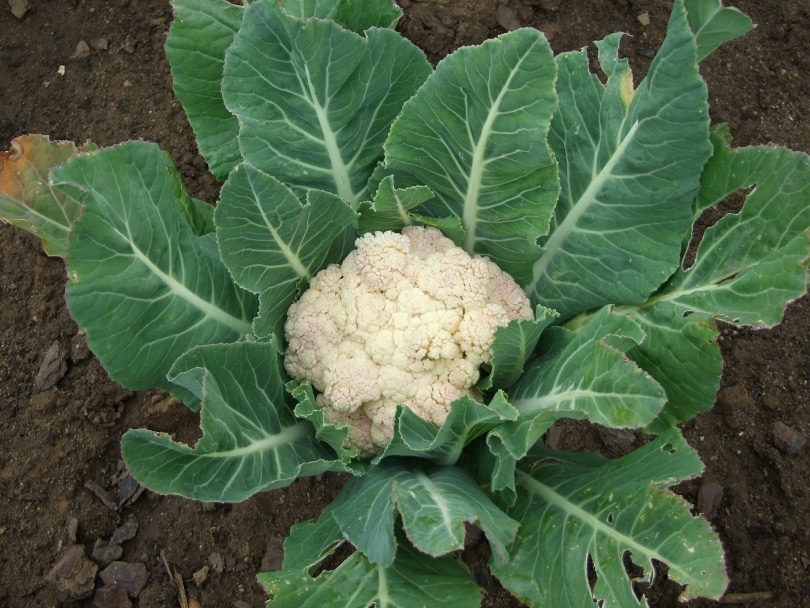
| Scientific Name | Brassica oleracea var. botrytis |
| Type | Vegetable |
| Location | Together |
Like cabbage and broccoli, cauliflower is negatively affected by several nasty insects and pests. However, when you give it a thyme companion, many of those pests stay far away. Also, as mentioned previously, thyme attracts the lovely ladybug, and ladybugs eat up aphids quickly.
Ladybugs are also pollinators like bees and will improve your cauliflower’s size and harvest. If you like cauliflower with cheddar cheese smothered on top, plant thyme nearby, and you’ll have plenty!
6. Eggplant
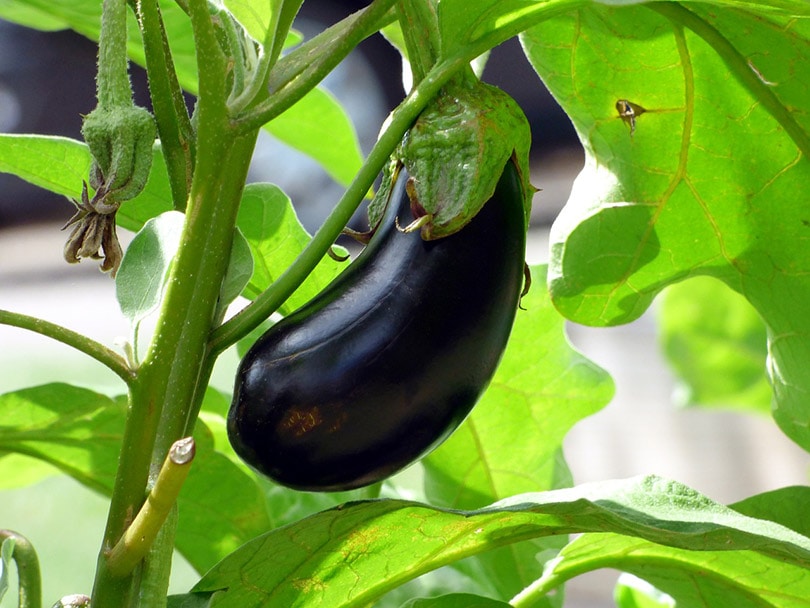
| Scientific Name | Solanum melongena |
| Type | Vegetable, nightshade |
| Location | Together |
Do you love eggplant parmigiana? It’s an Italian farmer food that became an international delicacy. Plenty of time goes into making this sumptuous dish, and plenty of thyme is used in the recipe, also. Planting both in the same vicinity makes a lot of sense, especially when you consider that thyme keeps garden moths away, and garden moths can make a mess of your eggplants. Not only will it keep moths away, but thyme does it naturally without the need for insecticides.
7. Kale
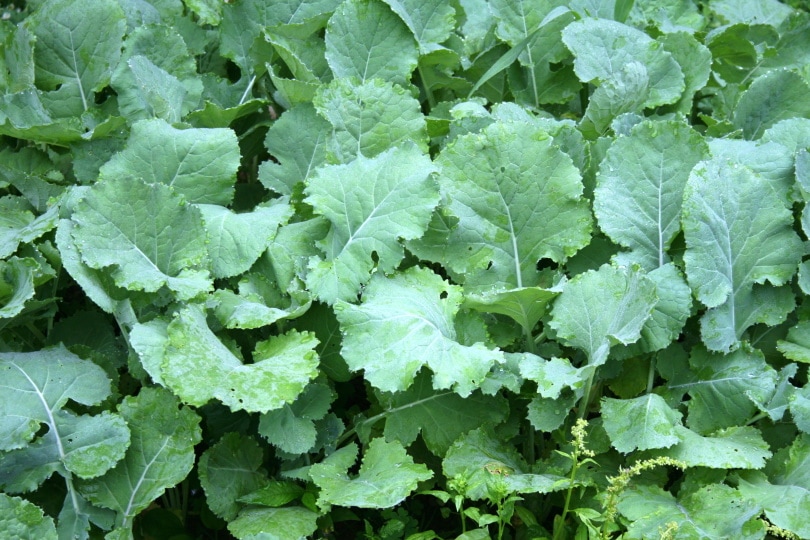
| Scientific Name | Brassica oleracea var. sabellica |
| Type | Vegetable |
| Location | Together |
As the last of the cabbage family of veggies on today’s list, kale is also another superfood that belongs on every menu. Planting thyme as a companion plant for kale (and vice versa) provides several benefits for both plants. The kale keeps the soil from getting too wet, and the thyme keeps the kale from getting devoured by aphids and other malicious insects.
As we’ve seen, thyme attracts ladybugs which eat aphids by the spoonful, and, in turn, those same ladybugs pollinate the kale plants. It’s a gardening win-win!
8. Lavender
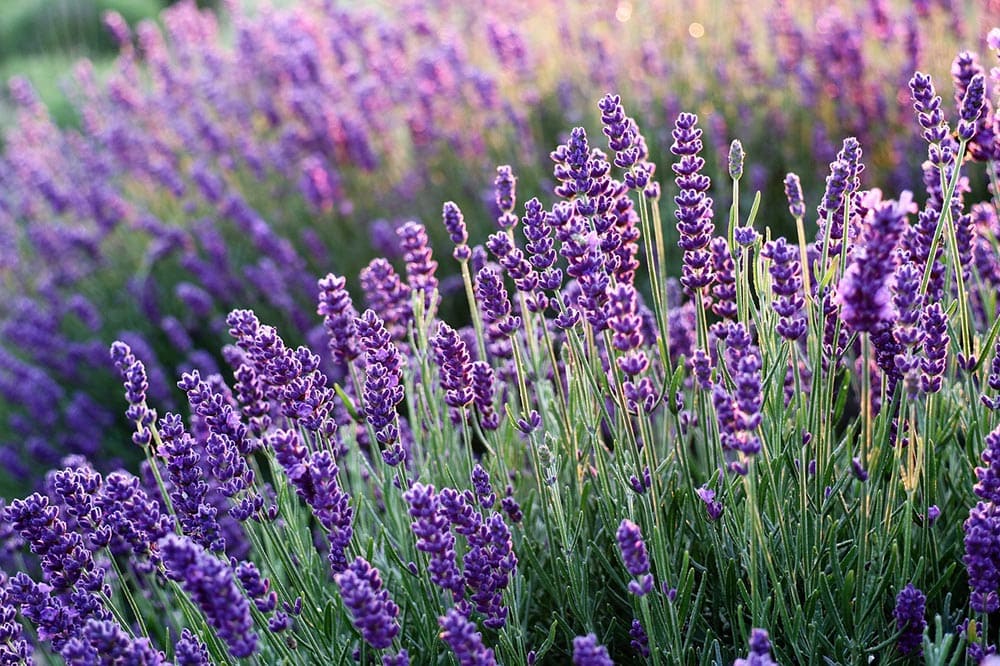
| Scientific Name | Lavandula |
| Type | Herb |
| Location | Together |
Not only is lavender one of the most popular herbs used as an essential oil, but it’s also been found to work well in alleviating the pain of rheumatism and neuralgia. Lavender makes an excellent companion plant with thyme as both have similar growing, water, and soil needs. Lavender also protects thyme from getting too much sun. Plus, both of these beneficial plants smell like a slice of heaven!
9. Oregano

| Scientific Name | Origanum vulgare |
| Type | Herb |
| Location | Together |
Oregano is another herb used mainly in Italian food but also in Turkish, Greek, and Mexican cuisine. It is one of the most pungent of all herbs. Oregano and thyme grow in similar conditions, making it easier to grow them as companion plants. Plus, your thyme plants will provide a shady blanket for your oregano plants and keep them from drying out.
10. Potatoes
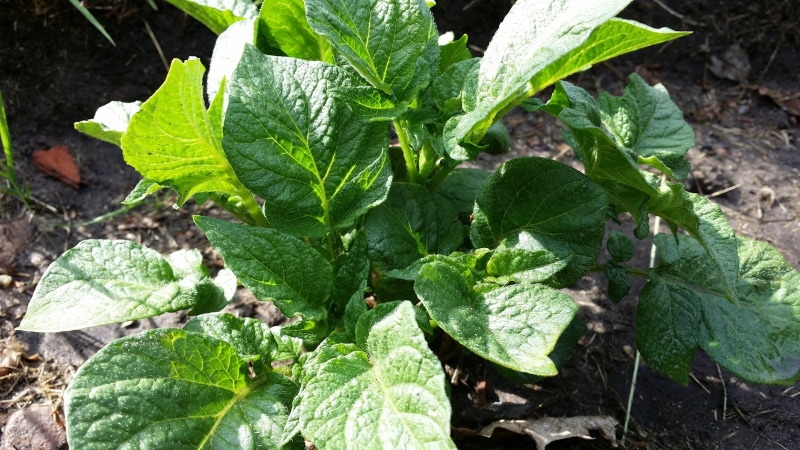
| Scientific Name | Solanum tuberosum* (*Where the nickname “tuber” comes from!) |
| Type | Vegetable |
| Location | Nearby |
What’s interesting about thyme is that it attracts certain insects that can kill other insects that destroy potato plants. One of those insects is the parasitic wasp. Thyme attracts these amazing (and admittedly grotesque) insects and, by doing so, protects potato plants from Colorado potato beetles.
That’s good because too many Colorado potato beetles can quickly destroy your potato crop. Also, it’s believed that thyme plants will improve the flavor of your potatoes (although this depends primarily on your particular taste buds).
11. Rosemary
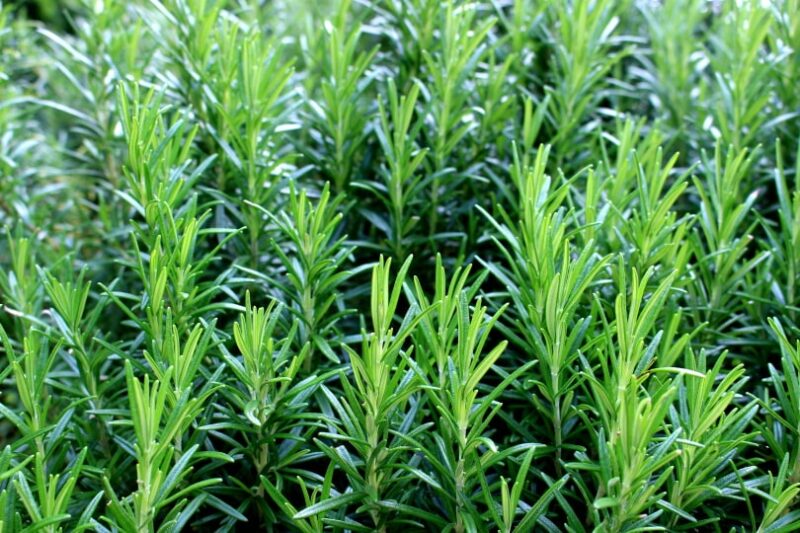
| Scientific Name | Salvia rosmarinus |
| Type | Herb |
| Location | Close by |
Like thyme, rosemary is a flavorful and popular herb used in many cuisines around the world. Both herbs need similar growing conditions, which makes it easier to grow them next to each other. They both repel a variety of insects, also. One caveat is that if you grow a tall rosemary variety, don’t grow it in the same pot as your thyme. Tall rosemary plants will often cover smaller thyme plants and lower their chances of thriving.
12. Roses
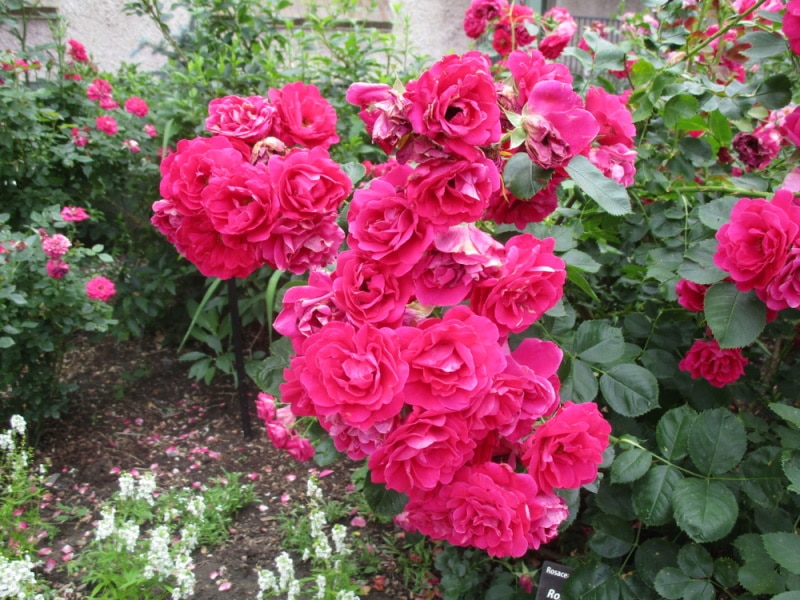
| Scientific Name | Rosa rubiginosa |
| Type | Flower |
| Location | Nearby |
Roses are, without a doubt, one of the world’s most beautiful and aromatic flowers. Did you know that you can eat rose petals? It’s true! You can eat them raw, in salads, and even in granola! The reason to plant thyme and roses next to each other as companion plants is more for the roses than the thyme since thyme repels several insects that destroy the wonderful flower. They include aphids and black flies, so be sure to plant thyme near your roses if you want them to bloom beautifully.
13. Sage
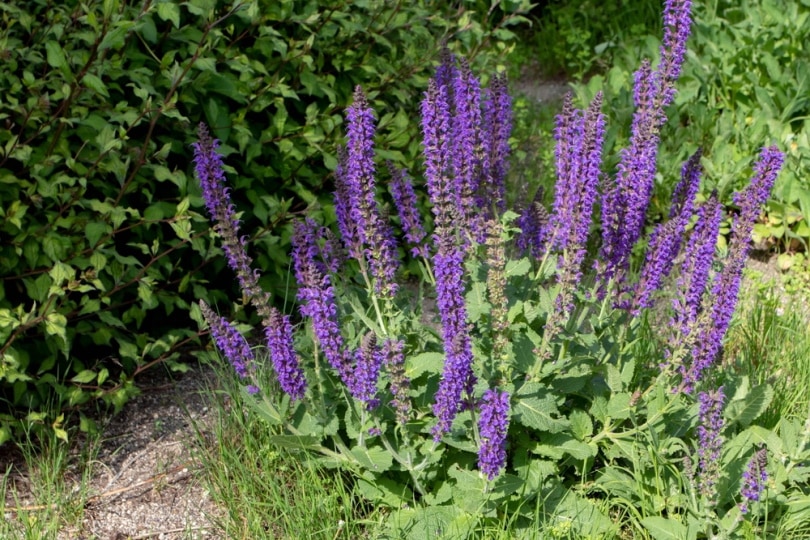
| Scientific Name | Salvia officinalis |
| Type | Herb |
| Location | Together |
Sage and thyme are great companion plants because they both like well-drained, drier soil and can handle moderate drought conditions. However, you should plant thyme around the outskirts of your sage plants because sage likes to creep and can overpower your thyme if you don’t. Like thyme, sage repels several insects and pests, including snails, beetles, and carrot flies. Plus, as everyone knows, you can’t have a steak without sage and thyme (plus some parsley and rosemary).
14. Salad Burnet
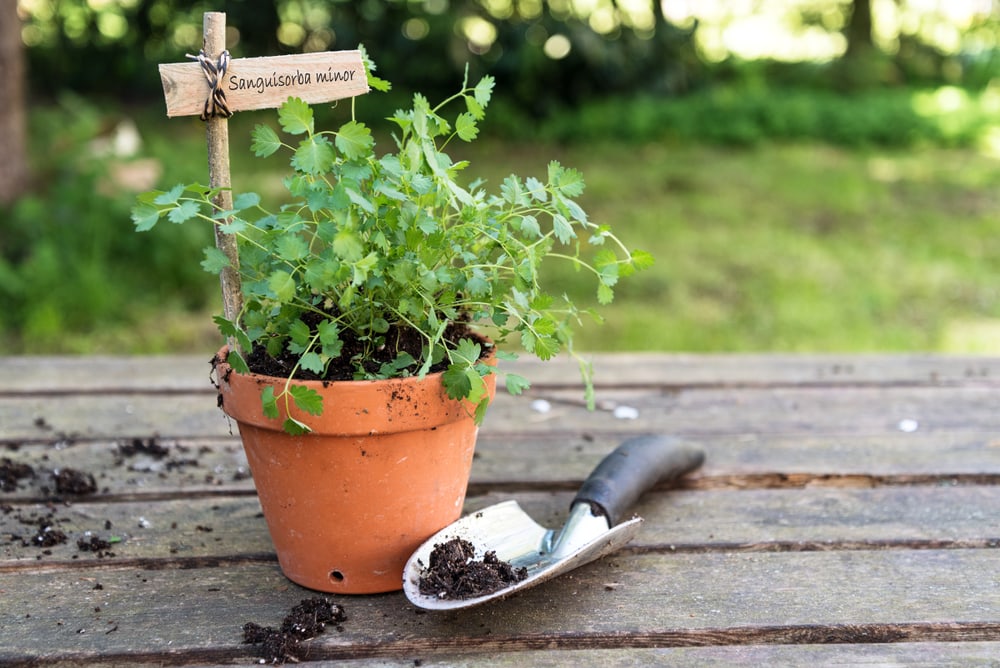
| Scientific Name | Sanguisorba minor |
| Type | Herb |
| Location | Together |
Here’s a secret we bet you didn’t know about salad burnet; it’s a member of the rose family. Like rose petals, you can eat salad burnet and use it in salads. Some use this interesting and aromatic herb in their mixed adult beverages. Plus, it’s used to flavor vinegar.
Planting thyme as a companion plant with salad burnet will empower it to thrive as the ladybugs that thyme attracts are fantastic pollinators. Plus, the two plants beside each other are very attractive and smell delightful.
15. Shallots
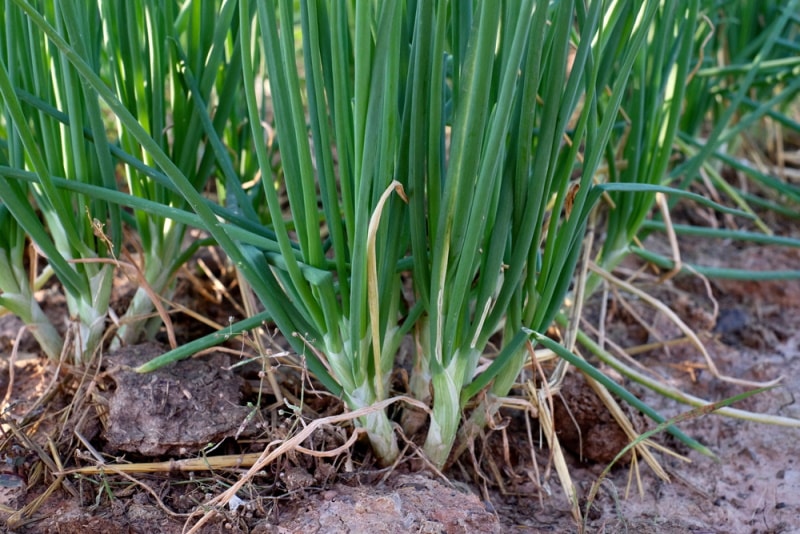
| Scientific Name | Allium cepa gr. aggregatum |
| Type | Allium cepa gr. aggregatum |
| Location | Together |
If you like onions, you’ll love the more delicate and refined flavor of shallots. Use them with white wine as a sauce for steamed oysters! As it’s been said to do with several other plants on today’s list, thyme enhances the flavor of shallots. More than that, thyme is also a worm deterrent, and worms are the bane of shallot plants. Together the two plants will thrive and, when cooked together, will kick the flavor of any dish up a notch!
16. Strawberries

| Scientific Name | Fragaria × ananassa |
| Type | Fruit |
| Location | Between rows |
As one of the planet’s favorite fruits, strawberries are delicious, nutritious, packed with fiber, and taste incredible dipped in chocolate. There are several excellent reasons to plant thyme as a companion for strawberries. The first is that the thyme will keep strawberry-eating worms away.
When planted between your rows of strawberries, thyme plants will smother any weeds that try to spring up. Lastly, by planting thyme with your strawberries, you will keep the soil moist for them because thyme provides excellent ground cover.
17. Tomatoes

| Scientific Name | Solanum Lycopersicum |
| Type | Fruit |
| Location | Nearby |
Is there anything better than a warm, freshly picked tomato eaten right off the vine? One of the best reasons to plant thyme as a companion for tomatoes is that thyme is the natural enemy of the tomato hornworm, and tomato hornworms can ruin your tomato plants.
Having thyme plants near your tomatoes will protect them from other insects and enhance their flavor when they ripen. A little fresh thyme sprinkled on a tomato salad is also savory and satisfying!
Thyme Growing Tips
Although thyme is one of the easiest herbs to care for, there are a few things you can do to ensure it thrives and provides companionship for your other plants.
Grow Thyme from Cuttings or Buy Plants
This tip might seem odd, considering it’s so easy to care for, but growing thyme from seeds is a frustrating affair. That’s because the seeds grow very slowly, and they germinate unevenly. It’s better to buy thyme plants that have already been started or grow them from cuttings you “borrow” from a friend or family member. After your thyme plants take hold, you can begin reproducing them from your own cuttings.
Plant Thyme in Full Sun
Thyme comes from the Mediterranean and loves lots of sunshine and hot weather. Therefore, it is necessary to plant thyme where it will get at least 8 hours of full sun a day. If you’re growing thyme indoors, ensure it’s close to a good light source.

Space Thyme Plants About 12 Inches Apart
Thyme is a rather bushy herb that will spread out and up. Most thyme varieties (there are over 300 of them) need about 12 inches of space, but some might require a little more.
Thyme Needs Well-Draining Soil
As we’ve mentioned, thyme is drought-tolerant, which means it can still survive and even thrive when there’s not a lot of water to be had. In fact, if you give thyme too much water, its roots will rot, and the plant will die, so make sure the soil drains well.
Plant Thyme Outside in Mid Spring
If you’re planting thyme in your garden, it can be planted in mid-spring when the soil temperature reaches about 70℉. Typically, that’s a few weeks before the last frost of the season, so don’t worry if it’s still cold outside in the morning.
After 4 Years, Replace your Thyme Plants
Thyme is a perennial plant and will grow back every year. It will also spread, so you need to reign it in, so it doesn’t go all over the place. One small problem, though, is that, after 4 years, thyme plants start losing their flavor and get reedy or woody. When they do, remove and compost old plants and replace them with new plants.
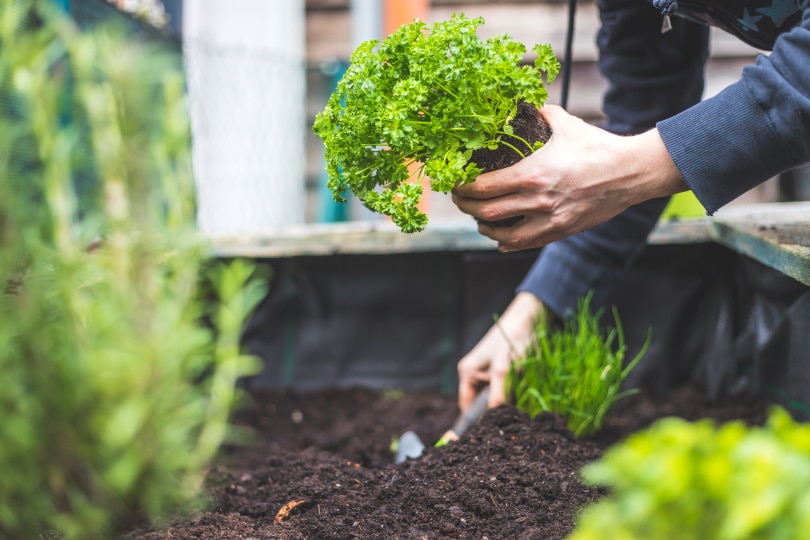
What Makes Thyme such a Fantastic Companion Plant?
What is it about thyme that makes it such a fantastic companion plant for other plants? Mostly, thyme repels a wide variety of insects that can attack, eat, and destroy your other plants, especially aphids. Below are a few other reasons thyme is a great companion to many of your other plants, including:
- It fits in between other plants but doesn’t overpower them.
- Thyme attracts bees!
- It covers the ground around other plants to keep the soil from drying out too much.
- Many gardeners swear that thyme improves the flavor of the plants around it.
- Thyme attracts ladybugs which are similar to bees and pollinate your crops.
- Thyme prevents weeds from growing by covering the soil and preventing them from getting sunlight.
Worst Companion Plants for Thyme
As much as thyme makes a good companion for many species, there are several that don’t do well near this amazing herb for different reasons. Below are three plants that shouldn’t be located near your thyme plants:
1. Basil

For some reason, basil doesn’t do well near other herbs, including thyme. Instead, you should plant basil near lettuce plants and any type of cabbage plants like cauliflower, broccoli, or kale. That way, the basil’s natural pest-deterring properties will help those other plants thrive.
2. Chives

Chives need soil that’s much moister than thyme and, therefore, shouldn’t be planted nearby as watering the former could ruin the latter.
3 Cilantro

Cilantro also needs wet soil that stays moist all the time, whereas thyme needs soil that drains well and stays relatively dry. Plus, while thyme grows well in sandy soil, cilantro doesn’t. Planting thyme and cilantro together could be a recipe for disaster.
Final Thoughts
Thyme makes a wonderful companion plant for several herbs, fruits, and vegetables. It keeps pests away but also attracts several beneficial insects. Thyme also prevents soil from drying out, provides shade to some smaller herbs, and grows well between plants because it doesn’t compete for room or water. Plus, thyme is one of the tastiest herbs and adds an earthy, minty flavor to many recipes.
We hope you enjoyed all of the information and beautiful pictures we shared today and that you now have a better idea of which plants will make great companions for thyme (and vice versa). Best of luck with all your gardening projects this season, and Bon Appetit!
Featured Image Credit: Frank Fischbach, Shutterstyock
Contents
